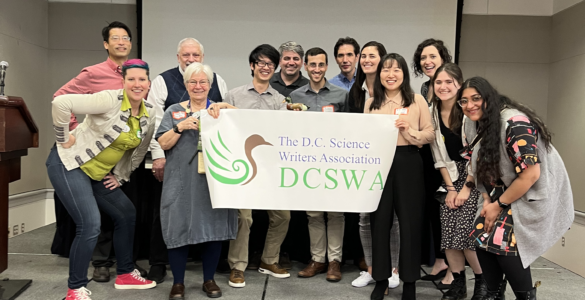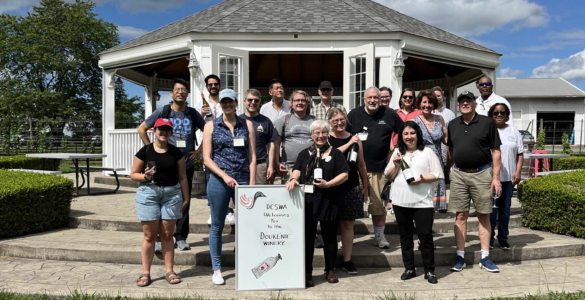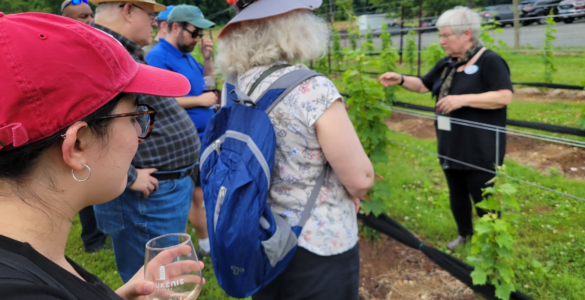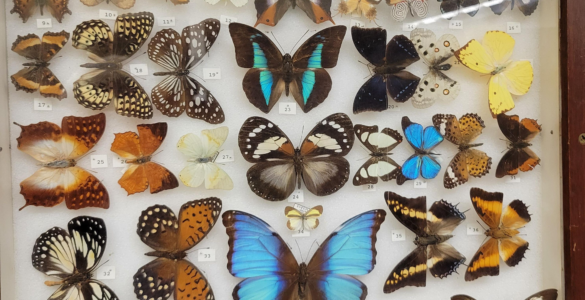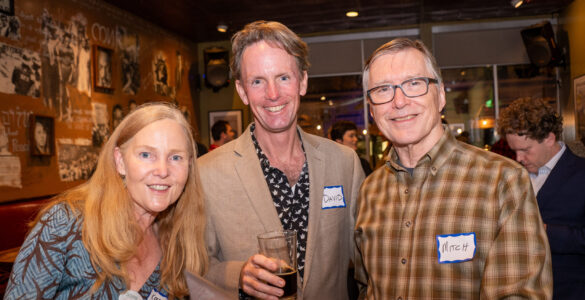For Immediate Release
April 20, 2023
Contact: Christine Dell’Amore
rueparadis@gmail.com
Winners Announced for 14th Annual DCSWA Newsbrief Award
Washington, D.C.—A story on how cells press pause on death and a video explaining gravitational lensing won the 14th annual D.C. Science Writers Association’s Newsbrief Awards.
Longform journalism often gets the field’s accolades, but short pieces are the true workhorses of science communication. In the spirit of recognizing these unsung works of excellence, DCSWA has been offering the Newsbrief Awards since 2009.
For the 2022 awards, two panels of science writers judged entries divided into two categories: writing and multimedia.
In the writing category, Shi En Kim won for “Scientists discover how a cell may cheat its own death,” published in Popular Science.
Shi En Kim (who usually goes by Kim) is a life sciences reporter at Chemical & Engineering News. She was a 2022 Early-Career Fellow at The Open Notebook, a 2021 AAAS Mass Media Fellow at Smithsonian Magazine, and an intern at Popular Science. Her writing has also appeared in National Geographic, Scientific American, Science News, and others. She would like to acknowledge Popular Science editors Lauren J. Young and Purbita Saha for editing her winning piece.
“The author illuminated an arcane cellular process by deftly weaving a metaphor about a sinking ship throughout the story,” said judge Carmen Drahl. “The piece hints at real-world applications but, as appropriate for a piece about basic research, doesn’t belabor them.”
Both writing honorable mentions were awarded to Carolyn Gramling for two stories in Science News, “A newfound dinosaur had tiny arms before T. rex made them cool” and “A pigment’s shift in chemistry robbed a painted yellow rose of its brilliance.“
Carolyn has been the Earth & Climate writer at Science News since 2017; for the magazine, she covers anything even tangentially related to earth science, including climate change, oceans, earthquakes, volcanoes and paleontology. Previously, Carolyn worked at Science, editing the magazine’s News in Brief section and writing about paleontology and polar science. And before that, she was a reporter and editor at EARTH magazine. A 2003 AAAS Mass Media Fellowship kicked off Carolyn’s transition from science to science writing, just on the heels of earning a Ph.D. in marine geochemistry from the MIT/Woods Hole Oceanographic Institution’s Joint Program for Oceanography. She also has a bachelor’s degree in geology from Florida International University in Miami and a bachelor’s in European history from the University of Pennsylvania.
In the multimedia category, Katy Mersmann earned the top prize for “Goddard Glossary: Gravitational Lensing,” a video for NASA’s Goddard Space Flight Center.
“As well as being fun, and a great use of both animation and physical props to explain, this video offers a timely answer to one of the top questions about the first images from the James Webb Space Telescope,” says judge Nicky Penttila.
Katy is a social media specialist at NASA’s Goddard Space Flight Center, with a focus on social video. She has worked as a video producer and social media lead for NASA Earth sciences and supported social media strategy for the launch and image release of the Webb Space Telescope. She has a bachelor of journalism and a master of arts in journalism from the University of Missouri. She lives with her own personal black hole, a cat named Webster.
An honorable mention in the multimedia category is awarded to Maria Temming and JoAnna Wendel for “Goldfish driving ‘cars’ offer new insight into navigation,” a comic that ran in the magazine Science News Explores.
Maria is the assistant editor at Science News Explores. Having spent much of her career covering the physical sciences, she has greatly enjoyed the opportunity to explore the weird, wonderful world of animal science through the Wild Things series.
JoAnna is a science writer and cartoonist living in Portland, Oregon. She’s written and made science comics for publications such as Science News Explores, Eos, Popular Science, Smithsonian, and more. JoAnna is fascinated by many areas of science but holds a special place in her heart for planetary science and invertebrates (especially if they’re in the ocean). In her spare time, JoAnna likes to paint, draw, read, look at birds, turn over rocks, and commune with trees.
Emily Schneider and Janali Thompson also won an honorable mention for “Easy to Spin Nanofibers, Inspired by Silkworms,” a video for the American Chemical Society.
Emily is a science writer and communicator focusing on a wide variety of topics. She studied both biochemistry and professional writing at Carnegie Mellon University and now works as a science writer for the American Chemical Society. Emily enjoys deconvoluting complex science and transforming it into something that is engaging and accessible to a wide audience. In her spare time, she enjoys crafting, visiting museums, and finding new restaurants. She would like to thank her editor, Katie Cottingham.
Janali has worked for ACS for at least 14 years, on a variety of video and audio podcast series such as Bytesize Science, Global Challenges Chemistry Solutions, Science Elements, C&EN’s Speaking of Chemistry, and many more videos from ACS Publications. When it comes to working on Headline Science and ACS National Meeting Media Briefings, the part he really loves the most is taking the science and making it more visual and easy to understand to the general public. He and his colleagues at ACS are also interested in telling the story behind the science and why it matters. He’s thankful for the work that he and his colleagues are doing, and he looks forward to seeing what’s next and how they can greatly impact science communication.
DCSWA will celebrate the winners in a ceremony at the DCSWA Professional Development Day on May 6. Teams that won top awards will receive $300 and a framed certificate; those awarded honorable mentions will receive framed certificates.
DCSWA members were eligible to submit entries published between January 1 and December 31, 2022. The D.C. Science Writers Association is an organization of more than 300 science reporters, editors, authors, and public information officers based in the national capital area. Details on how to enter the 2023 Newsbrief Award will appear on the DCSWA website by the end of the year.
Photos of the winners are available upon request.
######

